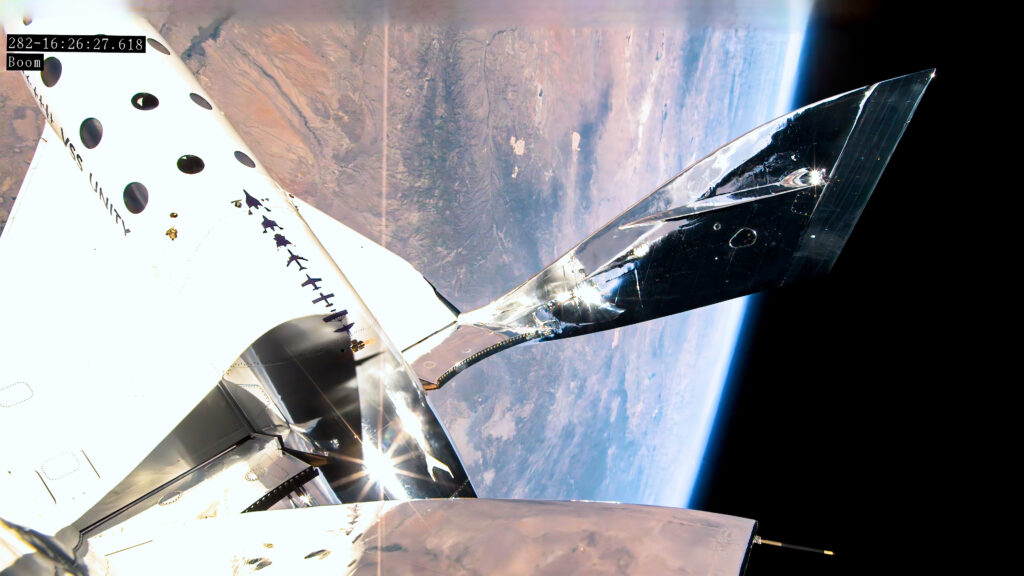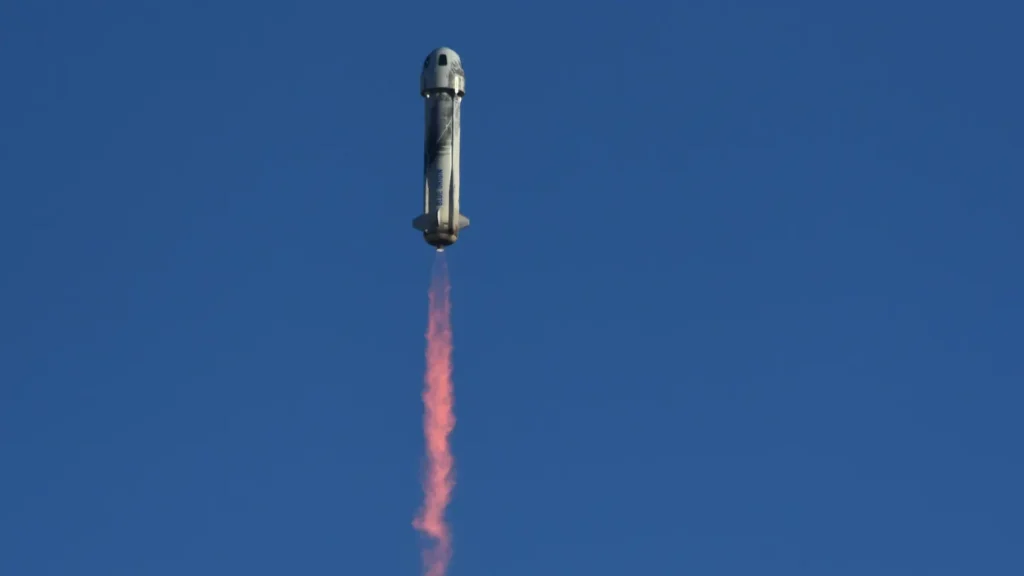Spaceflight has always fascinated humanity and with the advent of commercial space travel, Companies like SpaceX, Blue Origin, and Virgin Galactic pushing the boundaries of what was once only achievable by governments. Understanding the nuances between orbital and suborbital spaceflight is crucial in appreciating the diverse approaches to reaching space. This article aims to clarify the differences between orbital and suborbital spaceflight, helping you understand their unique characteristics, purposes, and the technology behind them.
Key Takeaways
- Orbital spaceflight requires achieving orbital velocity, which is significantly higher than the speed needed for suborbital flights.
- Suborbital flights reach outer space but do not complete an orbit around the Earth, making them shorter in duration and lower in altitude.
- The propulsion systems for orbital flights are far more complex and powerful compared to those used for suborbital flights.
- Human factors such as microgravity effects and life support systems are more critical in orbital flights due to their extended duration.
- Regulatory considerations, including licensing and international cooperation, play a crucial role in both types of spaceflights but differ in complexity.
Understanding Orbital Spaceflight
Orbital flight is defined as a spaceflight that completes at least one full orbit around the Earth. This feat requires immense speed and energy, as well as sophisticated engineering and resources. Spacecraft engaged in orbital missions must reach speeds of approximately 17,400 mph (28,000 km/h) to maintain a continuous orbit around the planet.
One of the earliest examples of orbital spaceflight was the Soviet Union’s Sputnik 1, launched in 1957. This historic event marked the beginning of the space age and paved the way for further advancements in orbital technology. In 1961, Yuri Gagarin became the first human to orbit the Earth aboard the Vostok 1 spacecraft, a milestone in the history of space exploration.
Key Characteristics of Orbital Spaceflight
- Velocity: Requires reaching orbital velocity.
- Duration: Typically involves longer missions, ranging from hours to months or even years.
- Altitude: Generally occurs at altitudes above 160 kilometers (99 miles) but can extend to thousands of kilometers.
- Purpose: Used for satellites, space stations, scientific research, and interplanetary missions.
- Examples: International Space Station (ISS), Hubble Space Telescope, and communication satellites.
Orbital Mechanics
Orbital mechanics is the study of the motions of artificial satellites and space vehicles moving under the influence of forces such as gravity. Understanding these principles is crucial for successful space missions. The key elements include the laws of planetary motion and the gravitational forces exerted by celestial bodies.
Orbital Velocity
To achieve orbital spaceflight, a spacecraft must reach a specific speed known as orbital velocity. This velocity is approximately 17,500 mph (Mach 23) for low Earth orbit. Achieving this speed allows the spacecraft to continuously fall around the Earth without intersecting its surface, unlike a sub-orbital spaceflight.
Orbital Debris
Orbital debris, also known as space junk, consists of defunct satellites, spent rocket stages, and other fragments from disintegration, erosion, and collisions. Managing this debris is essential to ensure the safety of current and future space missions. The increasing amount of debris poses a significant risk to operational spacecraft and the International Space Station.
The study of orbital mechanics and the management of orbital debris are critical components of modern space exploration.
Suborbital Spaceflight Explained
Suborbital spaceflight, on the other hand involves reaching space without completing a full orbit around the Earth. Suborbital missions typically reach altitudes above the Kármán line (100 kilometers or 62 miles), the internationally recognized boundary of space, before descending back to Earth.
Suborbital flights operate at lower speeds compared to orbital missions, typically around 3,700 mph (6,000 km/h). This reduced speed allows for a shorter duration in space before returning to the planet’s surface. Suborbital missions are often more cost-effective and require less complex engineering compared to orbital endeavors.

Historically, suborbital flights have played significant roles in space exploration. The Nazi V-2 rocket, developed during World War II, was one of the earliest vehicles to reach the edge of space on a suborbital trajectory. In 1961, Alan Shepard became the first American to travel to space on a suborbital flight aboard the Freedom 7 spacecraft.
Today, companies like Virgin Galactic and Blue Origin are pioneering commercial suborbital space tourism, offering brief but exhilarating experiences of weightlessness and a glimpse of the Earth from space. Suborbital flights are also utilized for microgravity research and scientific experiments, providing valuable insights into the effects of space travel on the human body and various materials.
Key Characteristics of Suborbital Spaceflight
- Velocity: Does not reach orbital velocity.
- Duration: Typically lasts from a few minutes to a couple of hours.
- Altitude: Reaches above the Kármán line (100 kilometers or 62 miles) but does not sustain orbit.
- Purpose: Ideal for space tourism, microgravity experiments, and testing spacecraft systems.
- Examples: Blue Origin’s New Shepard, Virgin Galactic’s SpaceShipTwo.
Trajectory
A sub-orbital spaceflight is a spaceflight in which the spacecraft reaches outer space, but its trajectory intersects the surface of the gravitating body from which it was launched. Hence, it will not complete one orbital revolution, will not become an artificial satellite nor will it reach escape velocity.
Altitude
Crewed sub-orbital spaceflights typically reach altitudes above 100 km (62.14 mi). This is significantly lower than orbital flights, which can reach altitudes of several hundred miles above Earth. Suborbital flights offer a brief experience of space without the complexities of achieving and maintaining orbit.
Duration
Suborbital flights are relatively short, often lasting only a few minutes. Passengers experience a brief period of weightlessness before the spacecraft descends back to Earth. This is in stark contrast to orbital flights, where participants can spend days, if not months, in space.
As the space tourism industry evolves, the ranks of spaceflight participants will grow, and suborbital and orbital flights will inevitably give way to lunar missions and beyond.
Comparing Orbital and Suborbital Flight
The primary distinction between orbital and suborbital spaceflight lies in the speed and energy required to achieve each mission. Orbital flights demand significantly higher speeds to maintain a continuous orbit around the Earth, while suborbital missions operate at lower velocities and reach space for a shorter duration before returning to the planet’s surface.
The engineering and resource requirements for orbital and suborbital flights also differ considerably. Orbital missions necessitate more complex and robust spacecraft, as well as advanced propulsion systems capable of generating the immense thrust needed to reach orbital velocities. Suborbital flights, on the other hand, can be accomplished with less sophisticated and more cost-effective vehicles.
In terms of cost and feasibility, suborbital flights are generally more accessible and affordable compared to orbital missions. The reduced speed and engineering complexity of suborbital vehicles make them easier to develop and operate, allowing for more frequent and cost-effective space travel opportunities.
However, it’s important to note that suborbital flights, while providing a taste of space, do not offer the same level of microgravity exposure or the ability to conduct extensive research as orbital missions. Orbital flights, such as those to the International Space Station, enable astronauts to conduct long-duration experiments and observations in a microgravity environment, contributing to our understanding of space and its effects on various aspects of life.
Key Differences in Launch Vehicles

Propulsion Systems
Orbital and suborbital launch vehicles utilize different propulsion systems. Orbital rockets require more powerful engines to achieve the necessary velocity to enter and remain in orbit. These engines often use multiple stages to incrementally increase speed and altitude. In contrast, suborbital rockets typically use simpler, single-stage engines as they do not need to reach the high velocities required for orbital insertion.
Reusability
Reusability is a significant factor in modern spaceflight. Orbital launch vehicles, such as SpaceX’s Falcon 9, are designed with reusability in mind, allowing for multiple launches and landings. This reduces costs and increases efficiency. Suborbital vehicles, like Blue Origin’s New Shepard, also emphasize reusability but face fewer technical challenges due to their lower velocities and altitudes.
Payload Capacity
The payload capacity of a launch vehicle is a critical consideration. Orbital rockets are designed to carry heavier payloads, including satellites, space station modules, and interplanetary probes. Suborbital rockets, on the other hand, are typically used for lighter payloads such as scientific experiments and crew training missions. The difference in payload capacity is largely due to the varying energy requirements for reaching orbit versus suborbital trajectories.
Conclusion
Understanding the differences between orbital and suborbital spaceflight is essential for appreciating the diverse approaches to reaching space and the unique opportunities each type of mission offers. Orbital flights, with their high speeds and continuous orbits, require sophisticated engineering and significant resources, enabling long-duration research and human presence in space, as exemplified by the International Space Station.
On the other hand, suborbital flights, operating at lower speeds and altitudes, provide more accessible and cost-effective opportunities for space tourism and short-duration microgravity research. Companies like Virgin Galactic and Blue Origin are leading the way in commercial suborbital spaceflight, offering passengers a glimpse of space and weightlessness.
Frequently Asked Questions
What is the main difference between orbital and suborbital spaceflight?
The main difference between orbital and suborbital flight is the speed at which a vehicle is traveling. An orbital spacecraft must achieve orbital velocity to remain in orbit, whereas a suborbital rocket flies at a speed below that and does not complete an orbital revolution.
What is orbital velocity?
Orbital velocity is the speed that an object must maintain to remain in orbit around a planet. For example, to orbit 125 miles (200 kilometers) above Earth, a spacecraft must travel at 17,400 mph (28,000 km/h).
How high do suborbital flights go?
Suborbital flights typically reach altitudes between 50 and 70 miles above Earth, which is considered space. However, they do not reach the altitude required to stay in orbit.
What are the duration differences between orbital and suborbital flights?
Orbital flights can last for days, weeks, or even months, depending on the mission. In contrast, suborbital flights are much shorter, often lasting only a few minutes in space.
Why are suborbital flights less expensive than orbital flights?
Suborbital flights are less expensive because they require much less energy and simpler technology. The speeds and altitudes involved are significantly lower than those needed for orbital flights, making the missions less complex and costly.
Can suborbital flights be used for scientific research?
Yes, suborbital flights can be used for scientific research, especially for experiments that require a few minutes of microgravity. Sounding rockets, which are similar to suborbital flights, have long been used for scientific purposes.
What is the difference between an orbital and a sub-orbital rocket?
An orbital rocket achieves speeds of at least 17,500 mph to complete an orbit around Earth, while a sub-orbital rocket reaches space but does not complete a full orbit, flying at lower speeds around 3,700 mph before returning to Earth.
What is sub-orbital travel?
Sub-orbital travel refers to spaceflight that reaches space but does not achieve the speed necessary to maintain an orbit around the Earth.
